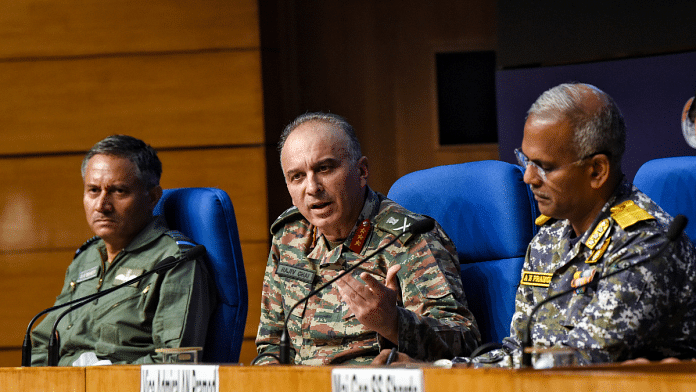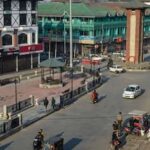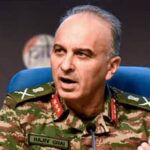The Air Marshal added, “At this time I would not like to comment on the numbers, which platforms did we lose? We are still in a combat situation. If I comment, it will be advantageous to the adversary. All our pilots are back home,” he said.
Asked about inputs that IAF had shot down Pakistani planes, he said “Their planes were prevented from entering inside our border…Definitely, we have downed a few planes…Definitely, there are losses on their side which we have inflicted”.
He added that the IAF knows the numbers but is still analysing all technical details and will come out with a report soon.
The IAF officer said that in the escalatory ladder, the IAF struck Pakistani air bases, command centres, military infrastructure, and air defence systems across the entire Western Front in a coordinated and calibrated manner.
“The bases we struck include Chaklala, Rafiqui, and Rahim Yar Khan, sending a clear message that aggression will not be tolerated. This was followed by strikes at Sargodha, Bhulari, and Jacobabad,” he said.
Asked about casualties suffered in these attacks, he said, “Our aim was not to inflict casualties, but in case there have been, it is for them to count. Our job is to hit the target, not to count the body bags”.
He also presented before and after satellite pictures of terror centres in Bahawalpur and Muridke besides military targets taken out in the escalatory ladder.
Addressing the joint press briefing, Director General of Military Operations (DGMO) Lt Gen Rajiv Ghai said that Operation Sindoor was conceptualised with a clear military aim to punish the perpetrators and planners of terror, and to destroy their terror infrastructure.
“It set into motion a very diligent and microscopic scouring of the terror landscape across the borders and the identification of terror camps and training sites. The numbers that emerged were numerous but as we deliberated more, we realised that some of these terror hubs and locations were now bereft of any presence and had pre-emptively been vacated fearing retribution from us.
“There was also a term of reference and our own binding, self-imposed restriction to target only terrorists, and thus prevent collateral damage,” he said.
He added that multiple intelligence agencies shortlisted 9 camps which were inhabited.
Some of these were in PoK, while others were located in the Punjab Province of Pakistan.
“Nefarious places such as Muridke, the hub of LeT, have bred infamous characters such as Ajmal Kasab and David Headley. What followed was a careful scrutiny of these sinister locations, their layout, configuration, even the type of construction in each structure and the terrain obtained around,” he said.
The DGMO said that this was with an obvious intent to “deduce the exact vector that was required for their neutralisation, as also the ‘eyes in the sky’ that we would send up to ensure that we brought back evidence that we had indeed targeted what we had set out to”.
He said that he had no doubt in my mind that the Indian armed forces achieved total surprise and those strikes across these nine terror hubs left more than 100 terrorists killed, including high-value targets such as Yusuf Azhar, Abdul Malik Rauf and Muddasir Ahmed, that were involved in the hijack of IC 814 and the Pulwama blast.
Talking about the understanding reached yesterday to cease firing and the violation of it by Pakistan, he said a hotline message was sent earlier today to Pakistan DGMO highlighting their violation of the Understanding.
He said the clear intent to respond to these fiercely and punitively, if repeated tonight or later, was also relayed.
In this regard, the Army chief has earlier today conducted a security review and granted full authority to Army Commanders for counter actions in the kinetic domain in case of any violation by Pakistan, he said.
Vice Admiral A.N. Pramod, the DG Naval Operations, said that the Indian Navy’s Carrier Battle Group, surface forces, submarines and aviation assets were immediately deployed at sea with full combat readiness, in concert with the joint operational plan of the Indian Defence Forces.
“You may be aware that we tested and refined tactics and procedures at sea during multiple weapon Firings in the Arabian Sea, within 96 hrs of the terrorist attack. The aim was to revalidate our crew, armament, equipment and platform readiness to deliver various ordnance on selected targets precisely.
“Thereafter, our forces remained forward deployed in the Northern Arabian Sea in a dissuasive and deterrent posture, with full readiness and capacity to strike select targets at sea, and on land, including Karachi, at time of our choosing,” he said.
The forward deployment of the Indian Navy compelled Pakistani Naval and air units to be in a defensive posture, mostly inside harbours or very close to their coast, which the Indian Navy monitored continuously, he said.
He said that the Indian Navy was part of the calibrated approach which would have included offensive action from the sea.
“As part of the escalation control mechanism, the application of force by the Navy was planned in a synchronised manner in concert with the Army and the Air Force, the highlight being teams from the three Services working closely in an integrated manner.
“Along with kinetic actions by the Indian Army and Indian Air Force, the overwhelming operational edge of the Indian Navy at sea, contributed towards Pakistan’s urgent request for a ceasefire yesterday,” he said.
(Edited by Zinnia Ray Chaudhuri)








